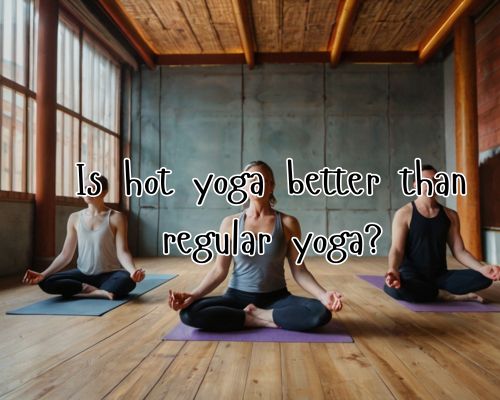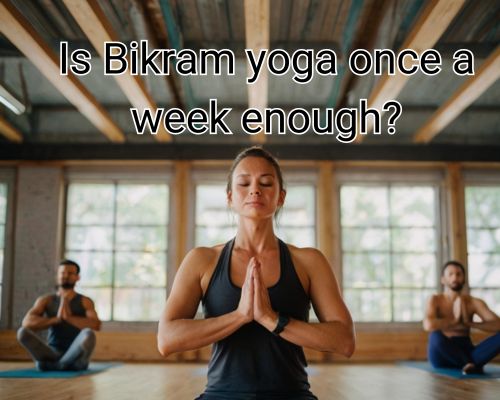Is Hot Yoga Better Than Regular Yoga? Exploring the Benefits in Mornington, Australia
In the scenic coastal town of Mornington, Australia, the wellness scene has flourished, with yoga studios lining Main Street and dotted along the bay. From sunrise flows on the beach to heated studios offering Bikram sessions, locals are spoiled for choice. But a common debate arises in this wellness-savvy community: Is hot yoga better than regular yoga? The answer, as with most things wellness-related, is nuanced. With Jane Benson of Bikram Yoga Mornington, we’ll unpack the pros, cons, and key differences between hot yoga and traditional yoga — with a particular spotlight on what’s trending in Mornington.

🧘♀️Understanding the Basics: Hot Yoga vs Regular Yoga
Let’s start by defining the two.
Regular yoga encompasses various styles such as Hatha, Vinyasa, Iyengar, and Yin. These are typically practised in room-temperature environments and focus on breathwork, alignment, strength, flexibility, and mental clarity.
Hot yoga, by contrast, is performed in a heated room, often ranging from 32°C to 40°C (90°F to 104°F). Styles like Bikram yoga (a 26-posture sequence) and heated Vinyasa flows are the most common. In Mornington, hot yoga studios such as Bikram Yoga Mornington or Studio Paradise Yoga offer these sessions multiple times a day.
🔥Why Mornington Locals Are Turning Up the Heat
The Mornington Peninsula is known for its outdoor wellness culture, but the cooler months see an uptick in hot yoga attendance. Locals appreciate the thermogenic benefits, which mimic the effects of cardiovascular exercise in a controlled setting. Here’s why hot yoga is gaining ground:
- Increased Flexibility: Muscles warm faster, allowing for deeper stretches.
- Cardiovascular Boost: The heated environment increases heart rate, which can help improve endurance.
- Detoxification: Profuse sweating encourages the release of toxins through the skin.
- Calorie Burn: According to Harvard Medical School, a 90-minute Bikram class can burn up to 600 calories.
LSI Keywords: calorie burn, muscle recovery, sweat detox, heat therapy, increased flexibility
🧠Mental Clarity or Overheating? Risks of Hot Yoga
Although hot yoga offers unique benefits, it also has potential drawbacks, especially for beginners or those with underlying health conditions.
- Dehydration Risk: Sweating profusely without adequate hydration can lead to dizziness or fainting.
- Overexertion: In the heat, you might push past your physical limits without realizing it.
- Cardiovascular Stress: Those with heart conditions should consult a physician before participating.
In Mornington, where active lifestyles are common and many participants are over 40, some instructors advocate a mix of both styles. For instance, Beachside Yoga & Wellness integrates cooler Yin classes with weekly heated sessions for balance.
📊Scientific Evidence: Does Hot Yoga Outperform Regular Yoga?
A 2018 study published in The Journal of Strength and Conditioning Research found that both hot and regular yoga improved flexibility, strength, and balance over an 8-week period. However, hot yoga participants showed slightly higher improvements in cardiovascular endurance.
Another 2020 study from Complementary Therapies in Medicine reported similar mental health improvements — reduced stress, lower anxiety levels, and improved mood — across both groups, showing that heat isn’t the sole factor in emotional well-being.
Key takeaway: While hot yoga may provide faster physiological changes, regular yoga delivers equally potent mental and emotional benefits.
🧘♂️The Local Pulse: What Yoga Instructors in Mornington Say
We spoke with Emily Sanders, lead instructor at Saltwater Yoga Studio Mornington, who explains:
“Hot yoga is amazing for physical transformation, but we always tell our clients to listen to their bodies. Sometimes a slow Hatha class does more for someone’s nervous system than 90 minutes in 38°C.”
At Ocean Bliss Yoga, the philosophy is hybrid. They offer seasonally themed yoga, suggesting hot classes during winter in Mornington, when dampness in the air can stiffen joints, and cooler Vinyasa flows in summer.
✅Who Should Choose Hot Yoga?
Hot yoga might be better suited for:
- Individuals looking to increase calorie burn and build stamina
- Athletes seeking faster muscle recovery
- Those needing a sweat-heavy detox
- Mornington residents with tight schedules who want a workout and stretch in one
LSI Keywords: muscle tone, fitness level, sweat therapy, body conditioning, metabolic boost
🌀Who Might Prefer Regular Yoga?
Regular yoga is ideal for:
- Beginners seeking a gentler introduction
- People with low heat tolerance or certain medical conditions
- Seniors or those recovering from injury
- Those who want to focus on mindfulness and meditative breathwork
In Mornington’s retirement-friendly zones like Mount Eliza and Mount Martha, many older residents prefer Yin or Restorative Yoga, which helps maintain mobility and mental sharpness without strain.
🌿Sustainability & Studio Choices in Mornington
A factor often overlooked is sustainability. Hot yoga studios require significant energy output to maintain heat. Some studios in Mornington now adopt eco-friendly heating systems or offer “warm yoga” — classes at 30°C, striking a middle ground between traditional and hot yoga.
Studios like The Green Room Yoga incorporate sustainable practices, including recycled mats, infrared panels, and filtered hydration stations.
🧩Which One Is Better? The Verdict
There is no one-size-fits-all winner in the “hot yoga vs regular yoga” debate. Each modality serves different needs:
| Category | Hot Yoga | Regular Yoga |
|---|---|---|
| Flexibility | High | Moderate |
| Detox | High (via sweat) | Moderate (via lymph flow) |
| Calorie Burn | High | Moderate |
| Stress Relief | High | High |
| Accessibility | Intermediate to Advanced | All Levels |
| Sustainability | Less eco-friendly | More eco-conscious |
In Mornington, where coastal life meets holistic wellness, the best approach may be fusion: alternating hot and regular yoga to harness the strengths of both. Local studios encourage this diversity, offering flexi-passes that include multiple class types to support holistic health.
💬Final Thought: What’s Best for Your Body?
If you’re asking, “Is hot yoga better than regular yoga?” — flip the script: What is your body asking for?
Mornington’s wellness community thrives because it understands balance — between effort and ease, sweat and stillness. Whether you’re stepping into a heated studio on Main Street or rolling out your mat under the sunrise at Mothers Beach, the real transformation comes not from the room temperature, but from consistency, intention, and mindful practice.













